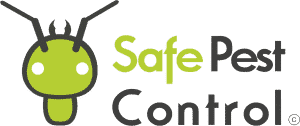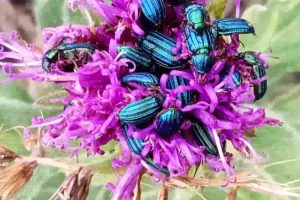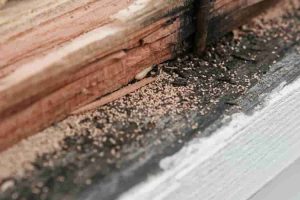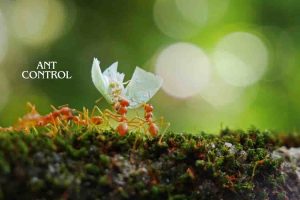Dealing with moth infestations can be a hassle, but we have effective solutions to help you protect your home. To control moth pests, you can use insecticides like pyrethrin to kill both adult moths and their larvae. It’s important to reapply these treatments to ensure all moths, including newly hatched ones, are eradicated.
Another option is to call a professional service like Safe Pest Control Sydney, especially if you suspect a large infestation. Professional services can provide thorough inspections and treatments to safeguard your property and ensure the health and safety of everyone around.
For those who prefer DIY methods, products like PestXpert Total Moth Control offer a convenient solution. These products use advanced technology to effectively rid your home of moths without the hassle and odor of traditional insecticides. Let’s explore these approaches to ensure our homes remain moth-free and comfortable.
Understanding Moth Infestations
When dealing with moth pests, it is crucial to recognize the types of infestations and understand the life cycle of moths. This knowledge is vital for effective control and prevention.
Types of Moth Infestations
There are various types of moth infestations, each needing different treatments. The most common are fabric moths and pantry moths. Common clothes moths target items like wool, fur, and feathers. Their larvae chew through fabrics, leaving holes and damage.
Pantry moths, such as the Indian meal moth, infest food storage areas, contaminating grains, flour, and other food products. Signs of a moth infestation include moth larvae and moth eggs in food or fabric, as well as small flying moths.
Life Cycle of Moths
Understanding the moth life cycle helps us target them effectively. Moths go through four stages: egg, larva, pupa, and adult. Females lay eggs in warm, dark places with abundant food. In homes, this often means closets or pantry shelves.
Moth eggs hatch into larvae, the most destructive stage. Moth larvae feed on fabrics or stored food items. The larval stage can last several weeks to months, depending on the species and environmental conditions.
After feeding, larvae spin cocoons and enter the pupal stage, where they transform into adults. Adult moths primarily focus on reproduction. They are often noticed as small flying insects, indicating that the infestation cycle is starting anew. Keeping these stages in mind helps us break the cycle effectively.
Prevention and Control Strategies
To effectively manage moth infestations, we should use a combination of chemical treatments, natural methods, and proper sanitation and maintenance practices.
Chemical Control
Using insecticides can be an effective way to handle a moth infestation. We should apply a pyrethrin insecticide, which targets both adult moths and their larvae. It’s important to reapply the insecticide multiple times to ensure that all moths, including newly hatched caterpillars, are eradicated.
In addition to sprays, we can use automatic pesticide dispensers for continuous protection. For a more targeted approach, mothballs can be placed in areas prone to infestation, but we must be cautious with their pungent smell and potential toxicity to pets and children.
Natural and Non-Chemical Methods
There are also non-chemical methods to control moths. Cedar oil is a natural deterrent that can be used in wardrobes and drawers to repel moths. Placing cedar blocks or sachets in these areas can help keep moths at bay.
Another method involves using temperature to our advantage. Exposing infested items to extremely hot or cold temperatures can kill moth larvae and eggs. For instance, using a high-heat cycle in the dryer or placing items in the freezer for a day can be effective. Additionally, pheromone traps can catch adult moths and keep their population under control.
Sanitation and Maintenance
Keeping our living spaces clean is crucial for preventing moth infestations. Regular vacuuming helps remove eggs and larvae from carpets, upholstery, and other surfaces. We should also frequently clean and inspect kitchen pantries, as moths often infest stored food items.
Ensuring proper storage by sealing food in airtight containers can prevent moths from accessing and infesting them. We should also monitor and rotate stored items to avoid long-term storage, which can attract pests. Integrated pest management solutions, combining multiple control strategies, can offer long-term effectiveness and sustainability.
By incorporating these strategies into our routine, we can significantly reduce the risk of moth infestations and maintain a pest-free environment.
Moth-Proofing Your Home
Moth-proofing your home involves taking steps to keep moths away from fabrics and food supplies. This requires attention to both storage techniques and cleaning routines.
Protective Measures for Fabrics
To protect fabrics, especially wool, natural fiber, and fur, we should regularly clean and inspect our homes. Clothes moths thrive in dark and undisturbed places like wardrobes, drawers, and cupboards.
Vacuum carpets and rugs frequently, including underneath furniture. It’s important to store out-of-season clothing in airtight containers or sealed bags. Cedar blocks or lavender sachets can act as natural repellents within closets.
Ensure all garments are clean before storage, as moths are attracted to oils and sweat embedded in cloth. Regular airing of clothing helps too. Simple steps like these can significantly reduce the risk of moth infestations.
Food Storage and Pantry Management
Pantry moths contaminate food, particularly dry goods like grains, flour, and cereals. To avoid this, keep your pantry clean and well-organized. Store dry foods in sealed, airtight containers made of glass or heavy-duty plastic. Regularly check for infested food and discard any that show signs of moth activity.
Vacuum shelves and cracks in your pantry to remove any hidden eggs or larvae. Thorough cleaning with a brush and soapy water helps eliminate remaining moths. Dried bay leaves or sachets of peppermint placed in your pantry can naturally repel these pests. Taking these steps ensures our food storage areas remain moth-free.
Professional Pest Control and Follow-Up
Hiring a professional pest control service ensures effective moth treatment and long-lasting results. It’s essential to choose the right provider and understand the follow-up process to keep your home moth-free.
Selecting Pest Control Services
When selecting a pest control service, consider their reputation and experience with moth treatment. Look for companies that employ certified technicians trained in the latest extermination methods. Morris Pest Control offers a well-detailed moth control service plan. A professional pest controller will inspect your home, identify the infestation level, and use proven methods to eliminate moths.
Read reviews and seek guaranteed services to ensure satisfaction. Some companies, like Flick Pest Control and Fantastic Services Australia, provide warranties on their services, offering peace of mind.
Aftercare and Monitoring
After the initial moth treatment, follow-up is crucial. Within the first few months, it’s important to monitor for any signs of moth activity. Reputable providers often offer follow-up visits, as mentioned by Pest Control Masters, to ensure the infestation is fully eradicated.
Regular inspections and preventive measures help maintain a moth-free environment. Keeping track of treatment efficacy and scheduling periodic checks will help in early detection and reduce the risk of re-infestation. This vigilant approach is vital to preserving the results achieved by professional exterminators.
On-Time Service

5 STAR SERVICE BASED ON 100+ GOOGLE REVIEWS
PET & FAMILY FRIENDLY TREATMENT

ALL YEAR-ROUND PROTECTION
Take Back Control Now
8
REASON TO CHOOSE SAFE PEST CONTROL
- Guarantee protection all year-round
- 30 Years Collective Experience
- An impeccable reputation across Sydney's Suburbs
- Certified treatments & written Warranty On all work carried out
- Family Owned & Operated
- Rated #1 Pest Control In Sydney NSW
- No Mess, No Smell
- Family & Pet Friendly Treatments
REQUEST A QUOTE









